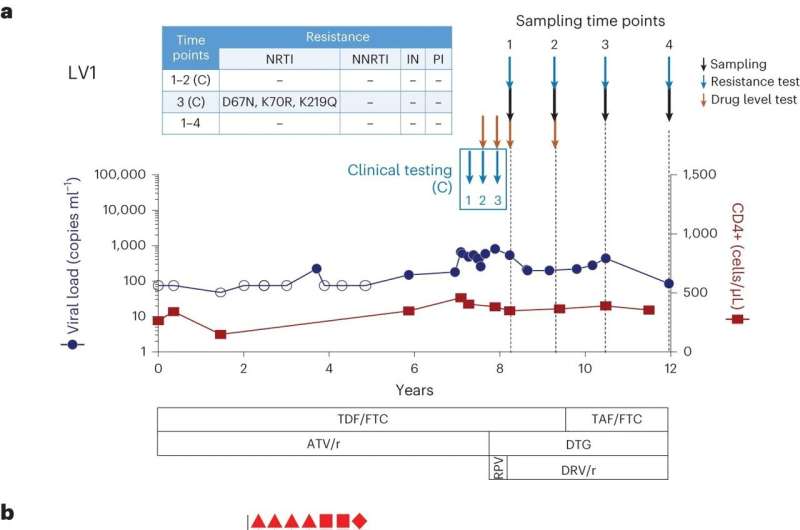This article has been reviewed according to Science X's editorial process and policies. Editors have highlighted the following attributes while ensuring the content's credibility:
fact-checked
peer-reviewed publication
trusted source
proofread
Study uncovers mediators of persistent HIV viremia

Human immunodeficiency virus (HIV) works by entering specific immune cells and replicating inside them. People with HIV are treated with antiretroviral therapy (ART), which prevents viral replication, but some individuals taking ART continue to have low levels of viral presence in the bloodstream, or viremia. This condition is usually attributed to drug resistance or ineffectiveness of ART, but recent studies have found that low-level viremia can occur even without these driving forces, a condition known as non-suppressible HIV viremia (NSV).
A team led by researchers at the Brigham and Women's Hospital, a founding member of the Mass General Brigham health care system, recruited eight participants with NSV despite receiving ART and analyzed both the virus and host immune response.
Using sequencing assays, the researchers found large reservoirs of proviruses—viral genetic material that has been integrated into host DNA—inserted into transcriptionally active regions of immune cell genomes.
Although unable to replicate due to ART, these proviruses contained mutations that helped them evade detection and were able to express genes leading to the NSV phenotype. In addition, the investigators found that the study participants had altered gene expression patterns that led to dampened immune responses and increased survival of cells infected with HIV.
The authors also suggest that these mechanisms could contribute to low levels of residual viremia in most individuals with HIV, even if they successfully undergo ART.
"Our study has identified potential mediators of non-suppressible viremia," said Jonathan Li, MD, of the Division of Infectious Diseases. "Furthering our understanding of these mechanisms could help develop strategies to disrupt viral persistence in all patients living with HIV."
The paper is published in the journal Nature Medicine.
More information: Abbas Mohammadi et al, Viral and host mediators of non-suppressible HIV-1 viremia, Nature Medicine (2023). DOI: 10.1038/s41591-023-02611-1



















